
2017 Honda City Facelift - Old Vs New
- Feb 11, 2017
- Views : 27776

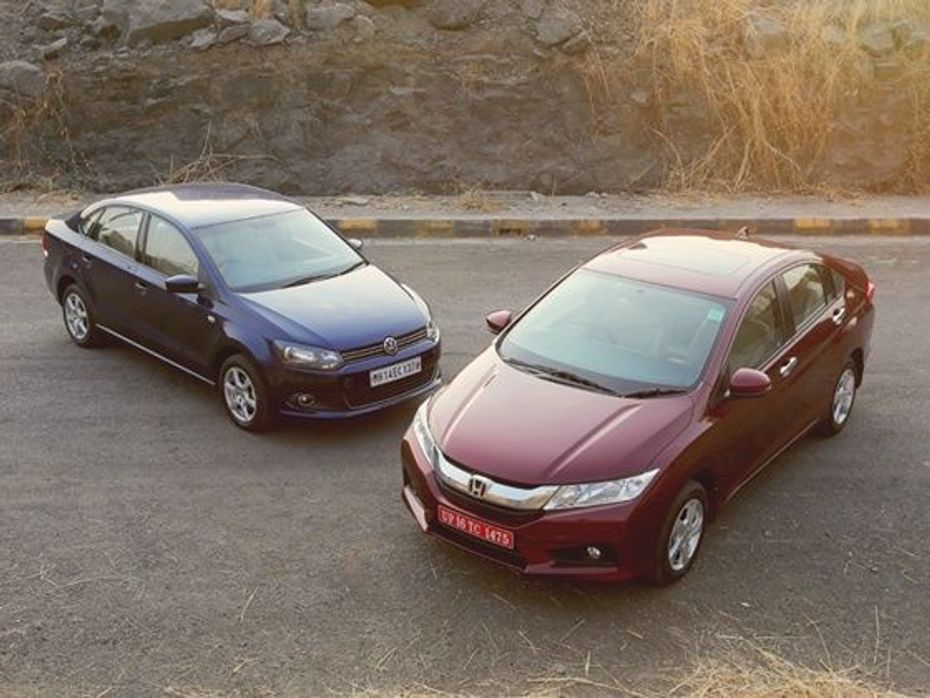
Automatics are definitely catching on. With congested roads and insufferable traffic, automatic cars seem to be the answer for hassle free driving. And, the latest in the ever increasingly portfolio of automatic cars in India is the New Honda City AT. But to see how good it is, we have the Volkswagen Vento TSI for comparison - both good cars; both with modern, refined and fuel efficient drivetrains; but only one winner.
Efficient automatics, meanwhile, is a recent occurrence. Going back in time, the older generation automatic transmissions were a far cry from the new-age auto boxes, which struggled to cut a niche in India. This, of course, was also because the technology back then wasn’t up to the mark. Most old-school automatic gearboxes were slow and cumbersome; these guzzled fuel; were inefficient; and as a result were expensive to run compared to manuals. The only reason why anyone thought of buying an automatic car back then was because of their inability to let go of the clutch pedal, correctly.
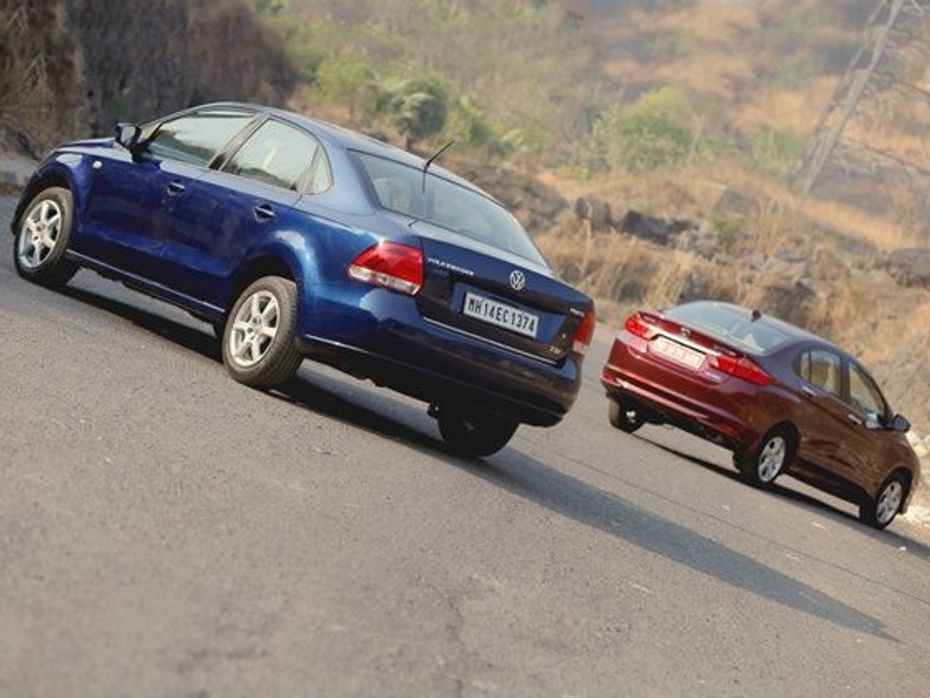
Thankfully, over the years technology has improved considerably, and with the introduction of dual clutch gearboxes and improved CVTs, automatic transmission (AT) has managed to shake off all the vices it was once associated with. Modern ATs have not just become better to drive but have also become cost-effective and more efficient. In fact, the DSG on the Volkswagen Vento TSI can outsmart most drivers; while the new Honda City CVT delivers higher fuel economy than its manual twin; According to ARAI the City AT returns 18kmpl while City manual gives 17.8kmpl. So suddenly, Indian car buyers have woken up to this segment and automatics are rolling out of showrooms faster than one would have predicted, say five years ago.
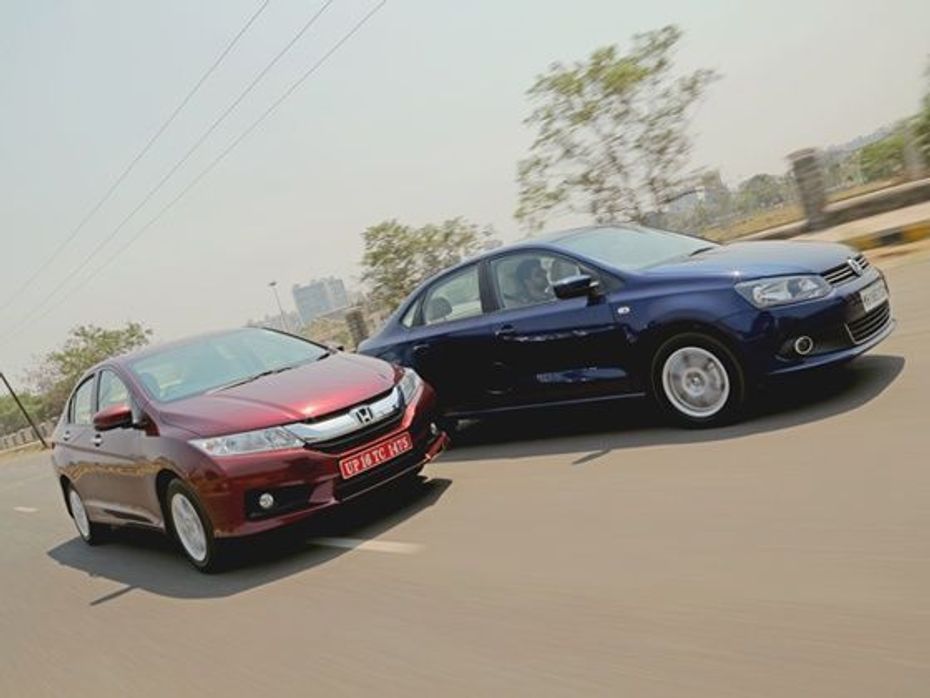
Up-close, the new Honda City AT and Volkswagen Vento TSI follow completely different approach of manufacturing and styling. The City is more modern and trendy, with sharp creases and shoulder lines. With swept back headlights and a large solid chrome grille — it appears to be a lot flashier and youthful. The Vento follows a more purist design, with subtle lines and minimalist approach. One has to admit that the simpler and understated Volkswagen will age more gracefully. The attention to detail by the German brand is excellent — right from the almost perfect gaps between the body parts and panels — to the boot-lid which comes evenly-layered even from the inside. The City, on the other hand, has its wires and cables exposed due to improper carpeting of the boot lid.
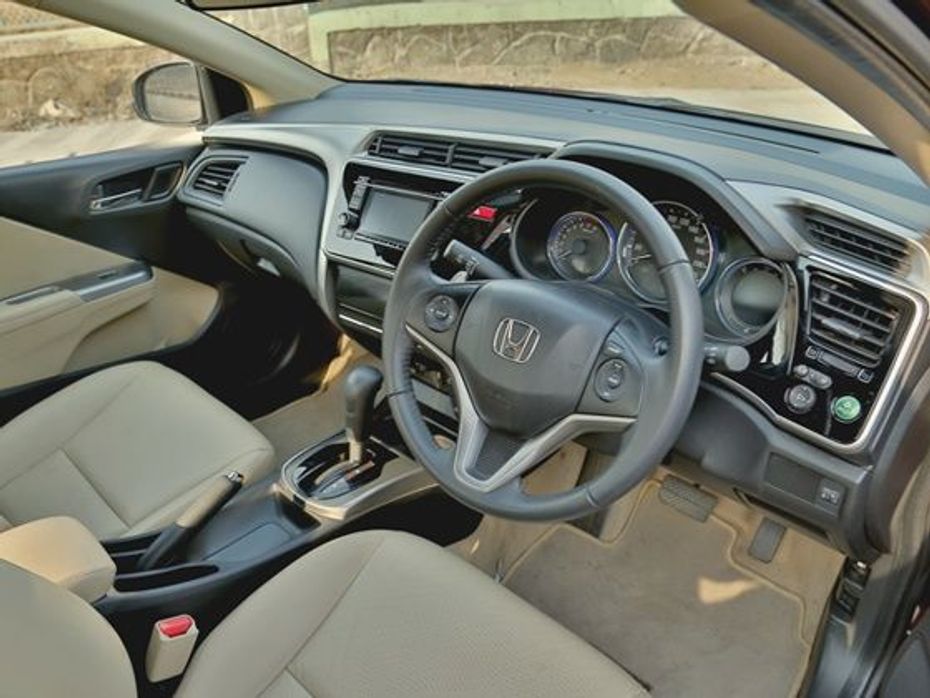
Coming to the interior design, the Honda has a trendy cabin; it is spacious, and the lighter coloured upholstery makes it feel roomy. There’s interesting use of colour and materials — like the piano black on the central console and blue-and-green backlit dials which gives it quite an edge. Considering the segment that we are talking about you can’t complain about the plastic quality or finish either.
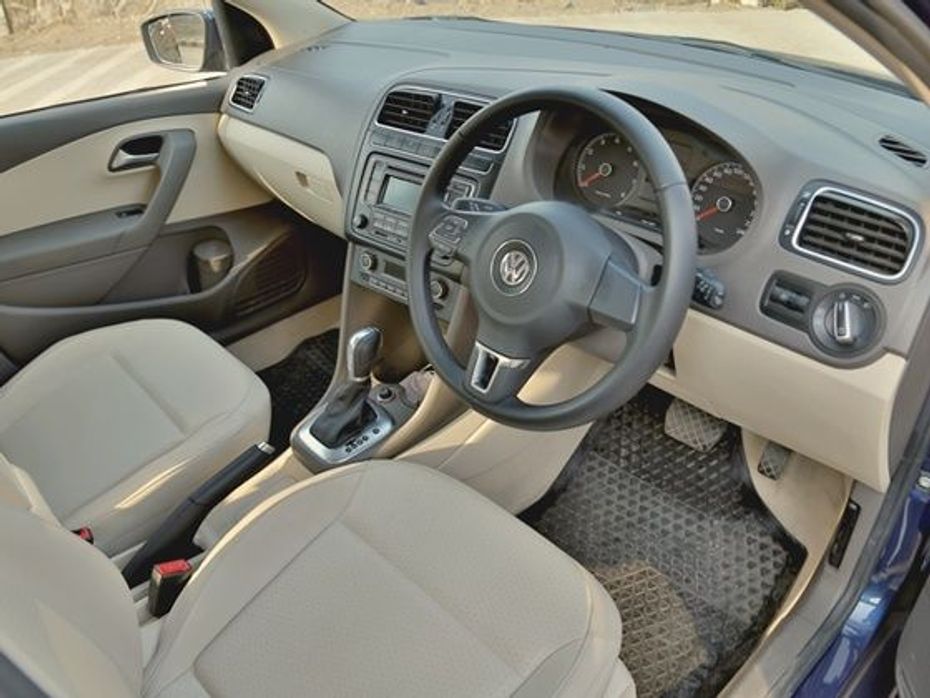
The Volkswagen Vento TSI is well-built too. Yes, the dashboard design lacks the drama and modernity of the City and seems targeted at a more mature sort of an audience, but like the Honda City, the quality of plastic and fit and the finish is impressive. Volkswagen had introduced more features in the Vento like steering mounted controls and Bluetooth connectivity, but it clearly still is no match for the new Honda City when it comes to equipment. The latter boasts of an eight-speaker entertainment system, five inch colour screen, reversing camera, climate control with touch-screen operation, power outlets in all possible formats and even a sun roof.
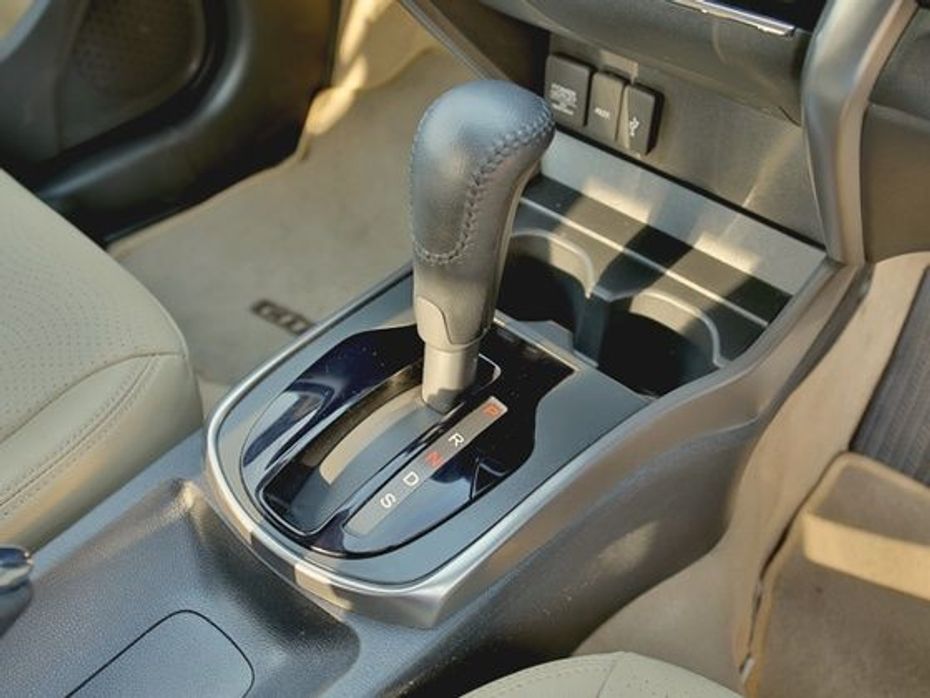
Both the cars have a completely different approach in the mechanical department as well, but run each other quite close. The new Honda City is powered by the latest generation i-VTEC 1.5-litre petrol engine which produces a strong 119PS of max power and 145Nm of peak torque. More importantly it comes with an improved CVT (Continuously Variable Transmission). The modern CVT is a far cry from its rubbery and unenthusiastic forbearers which offered poor performance. In contrast, the updated CVT in the new Honda City AT feels a lot more natural, sharper and willing. It reacts, and reacts well to the slightest of throttle inputs. And along with the engine that is smooth and responsive, driving the City CVT unhurriedly is quite a nice experience.
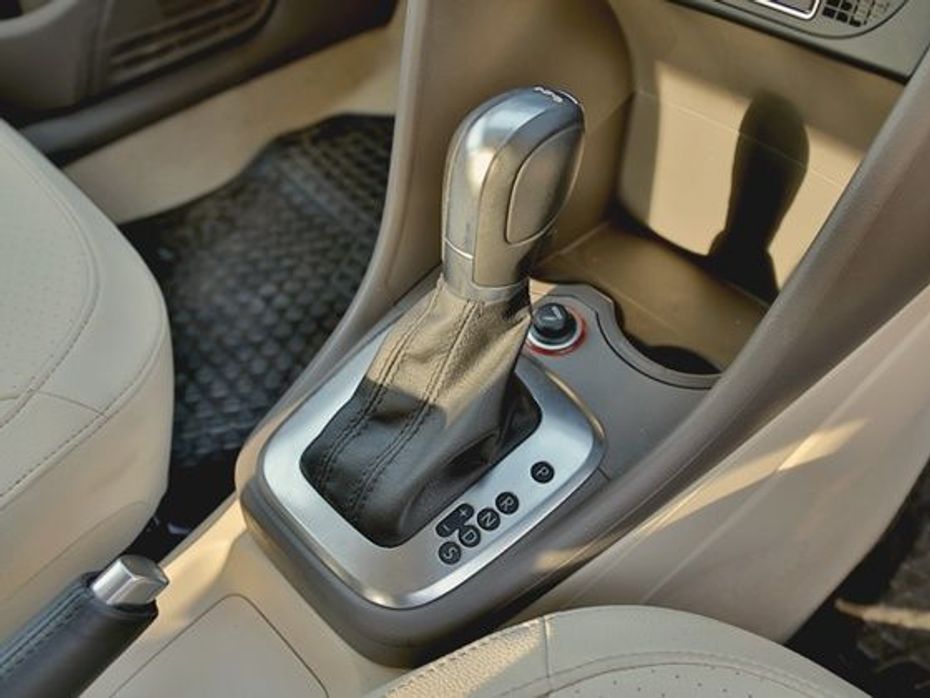
But when you put the pedal to the metal, you get a tad disappointed with the rubbery feel of the CVT which still seeps through. In typical CVT fashion, the engine revs a lot higher than the actual surge it delivers as it keeps itself at the optimum rpm to deliver the best possible acceleration. The Sport mode is a savior of sorts, since one can use the steering mounted paddles to control the CVT like a manual gearbox and also hold on to the gear a little longer.
The Volkswagen Vento TSI is more up for hammering than the Honda City. It comes with a smaller 1.2-litre petrol engine that produces lesser power at 105PS even though it is turbocharged. But, on the road, helped by it DSG gearbox, it still manages to give the bigger engined Honda City, a tough fight. The Vento TSI not only feels smoother when you drive it hard, but it also feels more willing. The Vento TSI feels peppier as well which is down to – in part – to its higher peak torque rating of 175Nm (30Nm more than the City) and its wider spread which is available from a much lower rpm than the Honda City.
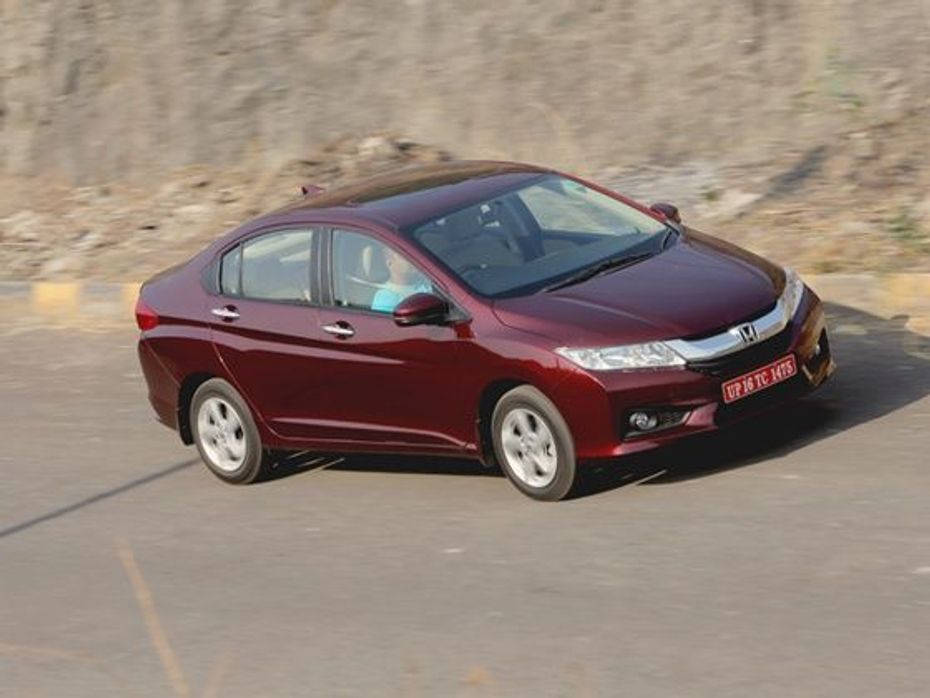
The Volkswagen achieves this impressive torque rating thanks to the combination of direct injection and a turbocharger. The other highlight on the TSI is the DSG, essentially a dual clutch transmission, which is one of the finest available in India. The seven-speed twin-clutch gearbox is really quick and has a wide range of ratios that squeezes the best out of the engine. Unlike the Honda, the Vento delivers a strong sense of power, and the tachometer needle flickers to the red-line and back as the DSG plays with the ratios enthusiastically. There is no hint of lag or elastic feel as on the CVT, but just pure performance the DSG gearboxes are associated with. The only thing missing here are gear paddles on the steering, but you can engage manual mode by simply shifting the gear stick to the left.
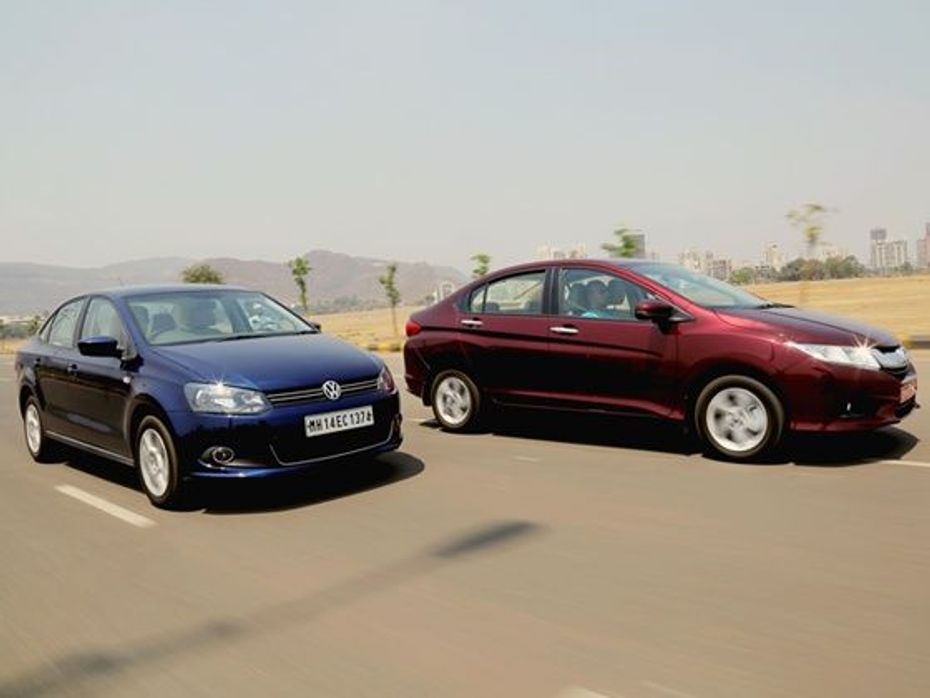
When it comes to ride quality, the Honda City has a softer suspension setup. And though for most part it is comfortable, it gets uneasy over bad patches of road. At slower speed, the City does not feel as grounded as the VW Vento. However, the straight line composure is quite impressive with no sign of pitching. The City offers surprisingly decent grip even with skinny tyres, but is not as reassuring as the Vento. However, the steering is light as found on most Hondas, but it weighs up well at speed and is fairly accurate.
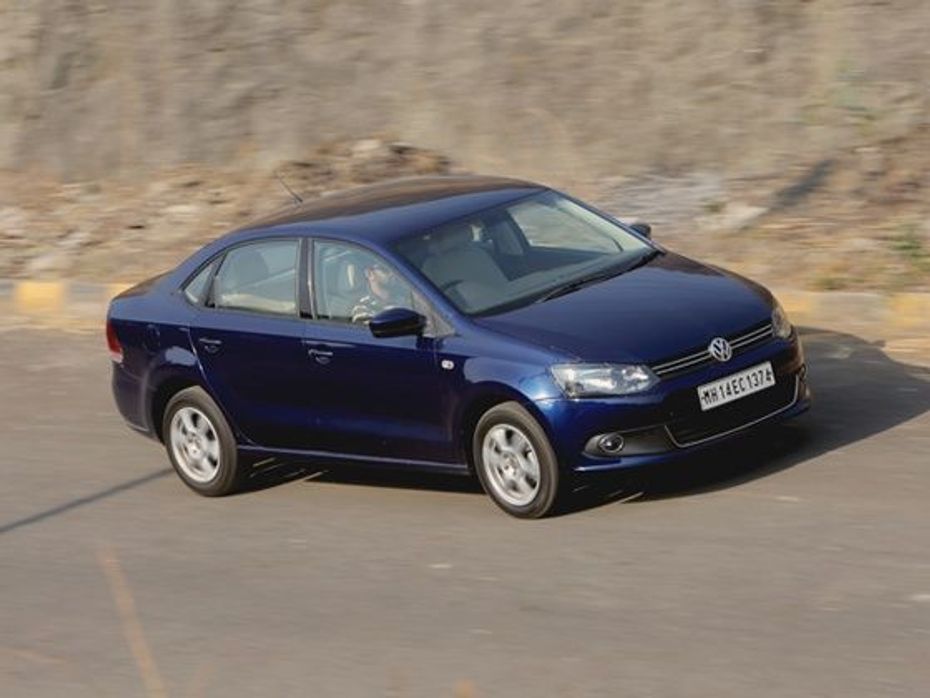
In comparison the ride quality of the Vento is on the firmer side. Having said that, the VW feels a lot more planted than the City and the fatter tyres, along with the well-sorted suspension, hold on to the road really well and keeps the car composed. It’s the car I would feel more comfortable in if I had to push to the limit. The disappointing part, however, is the steering which is surprisingly light for a Volkswagen and feels very assisted and numb. It'll be easy to maneuver on congested roads, but leaves us wanting when it comes to feedback.
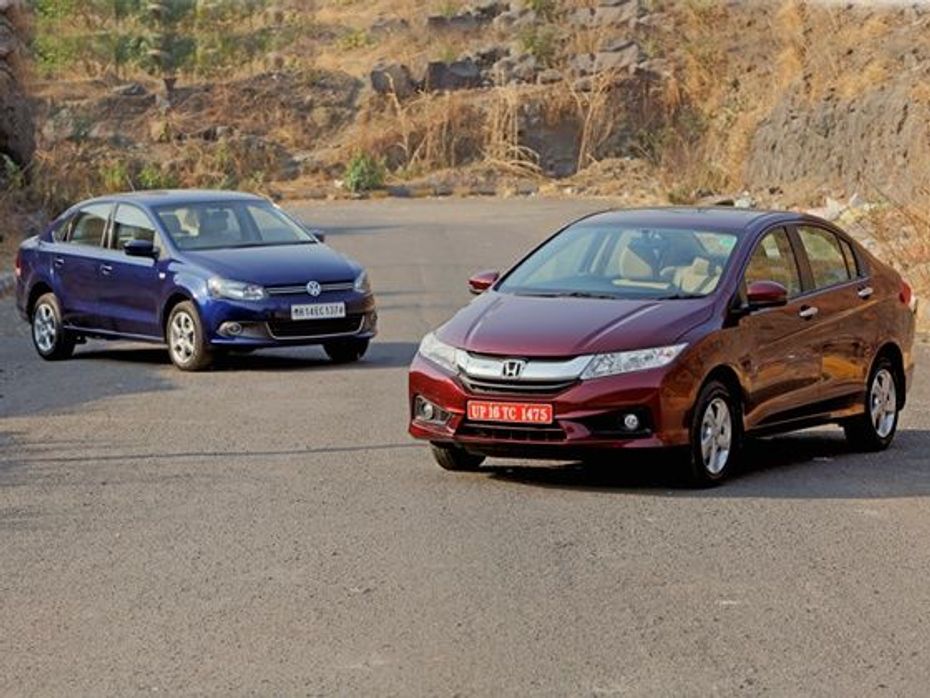
This isn’t as difficult a call as we had imagined initially. It’s clear the Vento is more up for sportier driving then be it the way its engine and gearbox reacts or the way it rides and handles. The Volkswagen Vento TSI is also cheaper to buy. But, for everything else – space, comfort, modernity, equipment and more relaxed cruising and fuel efficiency, the City is the car to go for. It is a lakh more expensive than the Vento, but as an overall package, the new Honda City AT is hard to beat.

2017 Honda City Facelift - Old Vs New

2014 Ford Fiesta vs New Honda City vs Volkswagen Vento Diesel...

2014 Ford Fiesta vs New Honda City vs Volkswagen Vento: Diesel...

New Honda City diesel vs Hyundai Verna diesel: Comparison

New Honda City Diesel vs Petrol: Engine Comparison

New 2014 Honda City vs Ford EcoSport diesel: Cross-segment faceoff

New Honda City Diesel: how does it compare with the Hyundai Verna

New 2014 Honda City Diesel: how does it compare with the Hyundai...

New Honda City (2014) vs Third Generation Honda City: Quick Comparison

Fourth-gen Honda City Will Soon Face The Axe In India
 Maruti Dzire
Maruti Dzire
 Hyundai Verna
Hyundai Verna
 Honda Amaze
Honda Amaze
 Skoda Slavia
Skoda Slavia
 Maruti Ciaz
Maruti Ciaz
India's largest automotive community
 No More Diesel-iMT Powertrain In India, As Kia Discontinues It For The Sonet, Seltos And Carens
No More Diesel-iMT Powertrain In India, As Kia Discontinues It For The Sonet, Seltos And Carens
 Hyundai Creta Electric: Things You Get With Each Of Its 5 Variants
Hyundai Creta Electric: Things You Get With Each Of Its 5 Variants
 Here Are Some Adrenaline Pumping Experiences From Auto Expo 2025 That You Should Not Miss!
Here Are Some Adrenaline Pumping Experiences From Auto Expo 2025 That You Should Not Miss!
 All You Need To Know About The Surprise Element At Auto Expo 2025: BMW iX1 LWB
All You Need To Know About The Surprise Element At Auto Expo 2025: BMW iX1 LWB
 Honda Amaze
Rs. 7.99 Lakh
Honda Amaze
Rs. 7.99 Lakh
 Honda City
Rs. 11.82 Lakh
Honda City
Rs. 11.82 Lakh
 Honda Elevate
Rs. 11.69 Lakh
Honda Elevate
Rs. 11.69 Lakh
 Honda City Hybrid
Rs. 19.00 Lakh
Honda City Hybrid
Rs. 19.00 Lakh
 Honda Amaze 2nd Gen
Rs. 7.19 Lakh
Honda Amaze 2nd Gen
Rs. 7.19 Lakh
 Maruti Dzire
Rs. 6.79 Lakh
Maruti Dzire
Rs. 6.79 Lakh
 Hyundai Verna
Rs. 11.07 Lakh
Hyundai Verna
Rs. 11.07 Lakh
 Toyota Camry
Rs. 48.00 Lakh
Toyota Camry
Rs. 48.00 Lakh
 Honda Amaze
Rs. 7.99 Lakh
Honda Amaze
Rs. 7.99 Lakh
 Hyundai Aura
Rs. 6.54 Lakh
Hyundai Aura
Rs. 6.54 Lakh